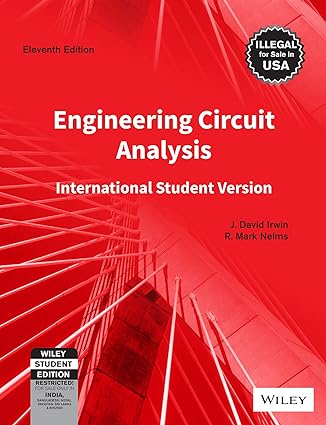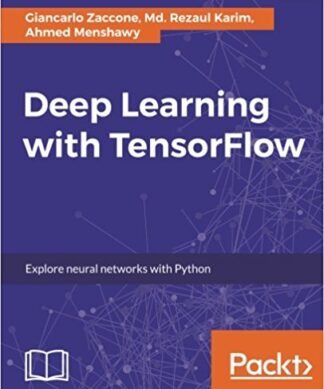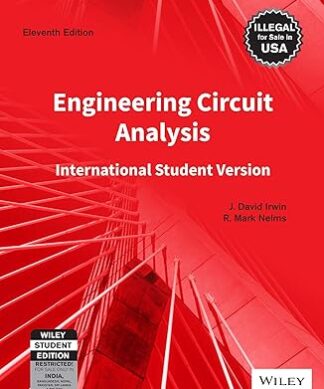Description
Preface Chapter 1 Basic concepts 1.1 system of units 1.2 Basic quantities 1.3 circuit elements Chapter 2 resistive circuits 2.1 Ohm’s law 2.2 Kirchhoff’s laws 2.3 single-loop circuits 2.4 single-node-pair circuits 2.5 Series and parallel resistor combinations 2.6 Wye Delta transformations 2.7 circuits with dependent sources 2.8 design example Chapter 3 nodal and loop analysis techniques 3.1 nodal analysis 3.2 loop analysis Chapter 4 operational amplifiers 4.1 Introduction 4.2 op-amp models 4.3 fundamental op-amp circuits Chapter 5 additional analysis techniques 5.1 Introduction 5.2 superposition 5.3 thévenin’s and Norton’s theorems 5.4 maximum power transfer 5.5 design example Chapter 6 Capacitance and inductance 6.1 capacitors 6.2 inductors 6.3 capacitor and inductor combinations 6.4 design example Chapter 7 First- and Second-Order transient circuits 7.1 Introduction 7.2 First-Order circuits 7.3 Second-Order circuits 7.4 design example Chapter 8 AC Steady-State analysis 8.1 sinusoidal 8.2 sinusoidal and complex forcing functions 8.3 phasor 8.4 phasor relationships for circuit elements 8.5 impedance and Admittance 8.6 phasor diagrams 8.7 Basic analysis using Kirchhoff’s laws 8.8 analysis techniques Chapter 9 Steady-State power analysis 9.1 instantaneous power 9.2 Average power 9.3 maximum average power transfer 9.4 Effective or RMS values 9.5 the power factor 9.6 complex power 9.7 Power factor correction 9.8 Single-phase three-wire circuits 9.9 safety considerations 9.10 design example Chapter 10 magnetically coupled networks 10.1 mutual inductance 10.2 energy analysis 10.3 the ideal Transformer 10.4 safety considerations Chapter 11 Polyphase circuits 11.1 Three-phase circuits 11.2 Three-phase connections 11.3 source/load connections 11.4 Power relationships 11.5 Power factor correction Chapter 12 variable frequency network performance 12.1 variable frequency-response analysis 12.2 sinusoidal frequency analysis 12.3 resonant circuits 12.4 scaling 12.5 filter networks Chapter 13 The Laplace transform 13.1 definition 13.2 two important singularity functions 13.3 transform pairs 13.4 properties of the transform 13.5 performing the Inverse transform 13.6 convolution integral 13.7 initial-value and final-value theorems 13.8 solving differential equations with Laplace transforms Chapter 14 application of the Laplace transform to circuit analysis 14.1 Laplace circuit solutions 14.2 circuit element models 14.3 analysis techniques 14.4 transfer function 14.5 Steady-State response Chapter 15 Fourier analysis techniques 15.1 Fourier series 15.2 Fourier transform Chapter 16 two-port networks 16.1 Admittance parameters 16.2 impedance parameters 16.3 hybrid parameters 16.4 transmission parameters 16.5 parameter conversions 16.6 interconnection of two-ports Chapter 17 diodes 17.1 Introduction 17.2 modelling techniques 17.3 analysis using the diode equation 17.4 diode rectifiers 17.5 Zener diodes Appendix complex Numbers index.

















Reviews
There are no reviews yet.